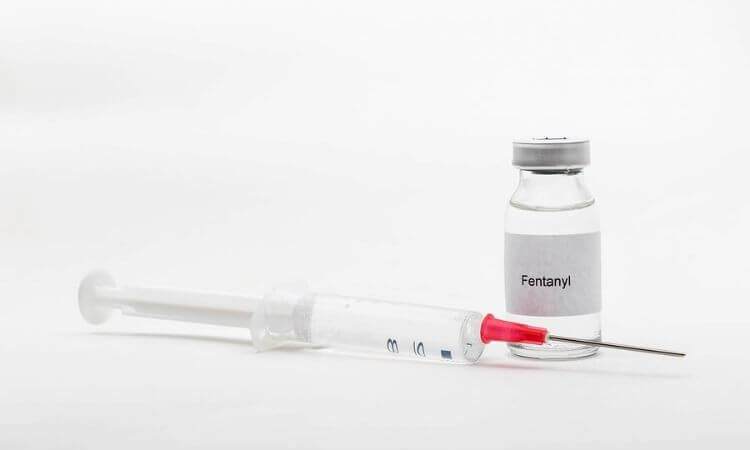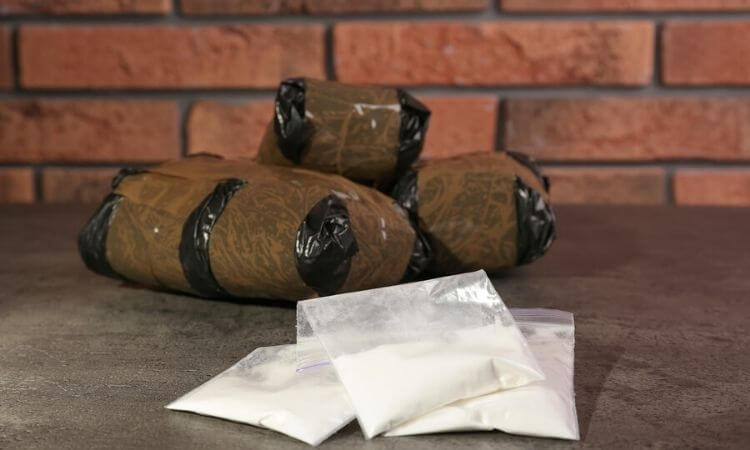
What is cocaine cut with? – Cocaine, as found on the street, is typically cut with a variety of adulterants, including, but not limited to, caffeine, creatine, laundry detergent, local anesthetics such as benzocaine, lidocaine, and novocaine, fentanyl, boric acid, mannitol, levamisole, and phenacetin.
Currently, it is very difficult to find 100% pure cocaine. Most of the time, cocaine, as purchased on the street, is cut with many adulterants. This technique is often used to expand the product and increase the profits of dealers. Cocaine itself is very dangerous, but many of the agents used to cut it have adverse effects of their own, many of which can be life-threatening.
Common Adulterants in Cocaine
There are a variety of additives that may be cut into cocaine, and some are more harmful than others. Common cutting agents that are relatively benign include caffeine, creatine, laxatives, and laundry detergent.
While some are not particularly dangerous, these agents can make a user more anxious, especially caffeine, which can increase heart rate and blood pressure. When combined with cocaine, this can lead to intense feelings of unease, anxiety, and panic.
And unfortunately, some cutting agents are much more dangerous and can be very toxic. When cut into coke, these drugs can cause an adverse reaction in many users, some of which have the potential to result in death.
Benzocaine
Benzocaine is an anesthetic used by dentists and is commonly used as a cocaine cutting agent because it has a similar numbing effect, and it is relatively inexpensive. It is also found in the form of a white powder, so it is easy to lace into cocaine.
Those who ingest coke cut with benzocaine are at risk for severe health complications. These include a life-threatening disorder known as methemoglobinemia. This condition involves the incurrence of abnormal levels of hemoglobin in the bloodstream. As this occurs, less and less oxygen becomes available to various tissues, and eventually, the tissues will begin to die.
If hemoglobin levels rise above 15%, the individual will encounter cardiac and neurological symptoms. The condition becomes fatal if levels reach 70% or higher.
Boric Acid
Like benzocaine, when mixed with pure cocaine, boric acid enhances the drug’s anesthetic effects. It also looks like cocaine crystals, so it’s easy to conceal its presence. But boric acid is a dangerous toxin, and in fact, it is sometimes used in the manufacturing of ant and rodent pesticides.
Due to its poisoning nature, the ingestion of large amounts of boric acid can result in death. It can cause many neurological and physical disorders and is considered to be one of the most hazardous cutting agents to be found in cocaine.
Fentanyl

Fentanyl is a highly-potent opioid up to 100 times more powerful than morphine. Its use has been related to thousands of deaths in the last few years, as it’s commonly found combined with heroin, meth, cocaine, and other drugs.
Illicit fentanyl is quite inexpensive to manufacture and obtain, and for this reason, it has become extremely popular with dealers intent on increasing profits. Unfortunately, a tiny amount can result in a life-threatening overdose. When fentanyl is combined with cocaine, the latter is probably the least of a user’s worries.
Levamisole
Levamisole is prescribed by doctors and veterinarians to kill parasitic worms. Levamisole may be used as a cutting agent because it increases dopamine levels in the brain, thus enhancing the overall euphoric effects of ingesting cocaine.
However, this drug can also cause agranulocytosis, a disease that will destroy all white blood cells in the body. Without these vital blood cells, the body becomes very vulnerable to a wide variety of adverse effects and disorders. When faced with this condition, death can occur from even minor injuries or infections.
Lidocaine and Novacaine
Lidocaine and novocaine are common local anesthetics, and its numbing effects have made it an ideal cutting agent for cocaine. Unfortunately, cocaine and lidocaine tend to amplify the effects of each other and can result in acute toxicity, convulsions, and seizures.
Cocaine, when combined with either lidocaine or novocaine, can also cause heart problems, such as arrhythmia, as well as confusion and drowsiness. Users may also encounter blurred vision. Some of these symptoms are temporary, but their intensity can become worse over time with continued cocaine abuse.
Mannitol
Mannitol can be used to cut both heroin and cocaine. It is a diuretic commonly prescribed to reduce swelling and pressure inside the eye or around the brain. It is also an anticaking agent that can keep substances in a powdered form. It can be dangerous and addictive, however, and can lead to health complications in those who are allergic to it or have a history of heart disease or failure.
Phenacetin
Phenacetin was once a popularly used painkiller but was removed from the market due to reports of adverse effects and reactions. Most significantly, it has been found to be a carcinogen and can lead to loss of consciousness, low blood pressure, heart failure, and death.
Pure Cocaine and Its Effects

As noted, it is not easy to find 100% pure cocaine on the streets. Those who do succeed are probably going to pay double or triple the price of adulterated cocaine. Because it is more potent, pure cocaine is also more dangerous and more likely to cause an overdose or heart damage.
Indeed, users who ingest pure cocaine when they accustomed to using adulterated drugs may be more vulnerable to overdose. Moreover, their tolerance level isn’t enough to handle the additional potency, and this can lead to cardiac arrest and death.
But regardless of whether a user is snorting pure or buffered cocaine, either scenario can be extremely dangerous. The chemical effects of either form can cause permanent damage to the body, especially when it is ingested for a prolonged period. Long-term addicts will also likely encounter more intense withdrawals and more severe side effects.
Why Cocaine Is Addictive
Cocaine is a powerful stimulant derived from the coca plant native to South America. When ingested, it increases the feel-good chemical dopamine in the brain, resulting in increased energy, euphoria, and feelings of reward and well-being. Over time, repeated use result in the brain’s inability to produce dopamine on its own without the presence of cocaine. Extended abstinence from the drug, however, will usually reverse this problem.
Due to cocaine’s brief effects, users often consume it in a binge-like fashion. This pattern of use will eventually result in increased tolerance and some level of chemical dependence that results in withdrawal symptoms upon discontinuation of use. When these conditions manifest, a person will be vulnerable to losing all control over cocaine use and will continue to do so despite the incurrence of adverse consequences.
Getting Help for Cocaine Addiction
An addiction to cocaine can be devastating to a person’s life and can lead to overdose and other life-threatening complications. Fortunately, this disorder is very treatable, and many people have overcome their need to use cocaine and have gone on to live happy, healthy, and productive lives.
Midwood Addiction Treatment offers comprehensive treatment programs tailored to each person’s individual needs. We provide a wide variety of therapeutic services, including behavioral therapy, counseling, group support, and experiential activities such as art and music therapy.
Are you struggling with a cocaine use disorder, or does someone you love suffer from this condition? If so, we urge you to contact us as soon as possible to discuss treatment options and take the first step in seeking long-term recovery.
We are dedicated to helping each person who is suffering from addiction to reclaim the life they deserve and enjoy long-lasting sobriety and wellness!